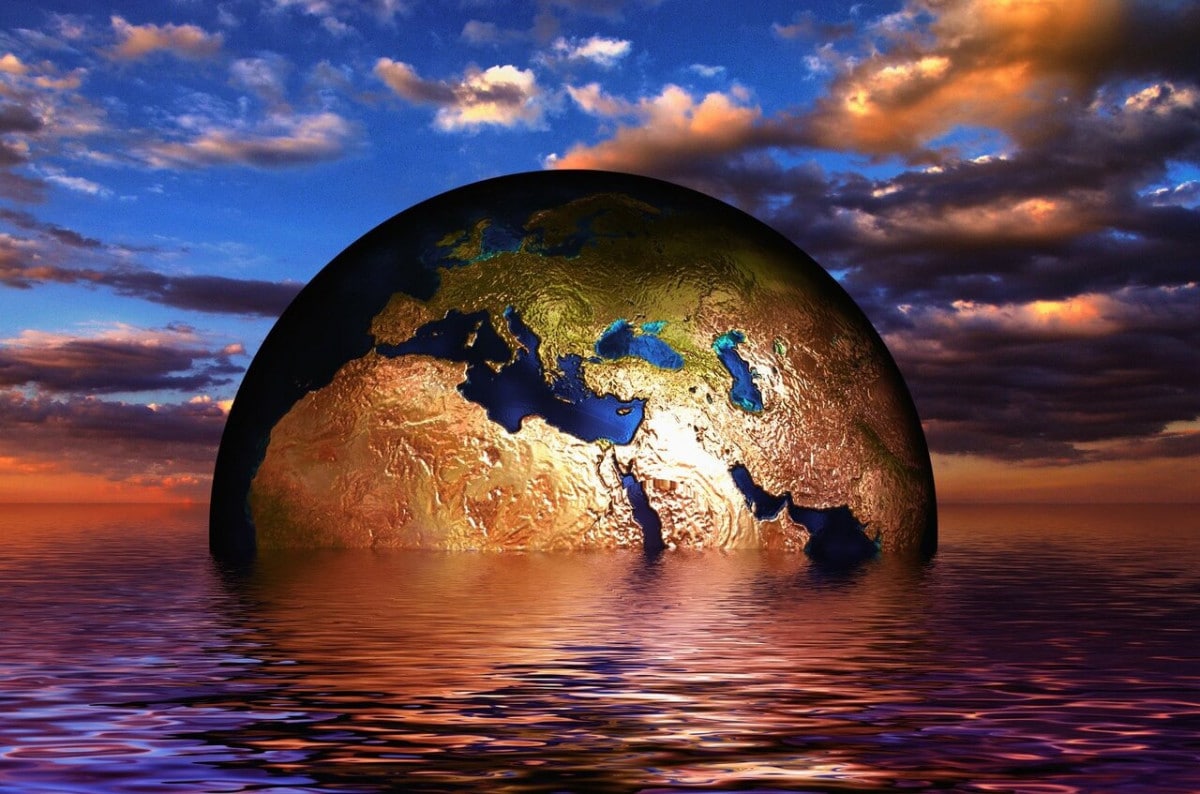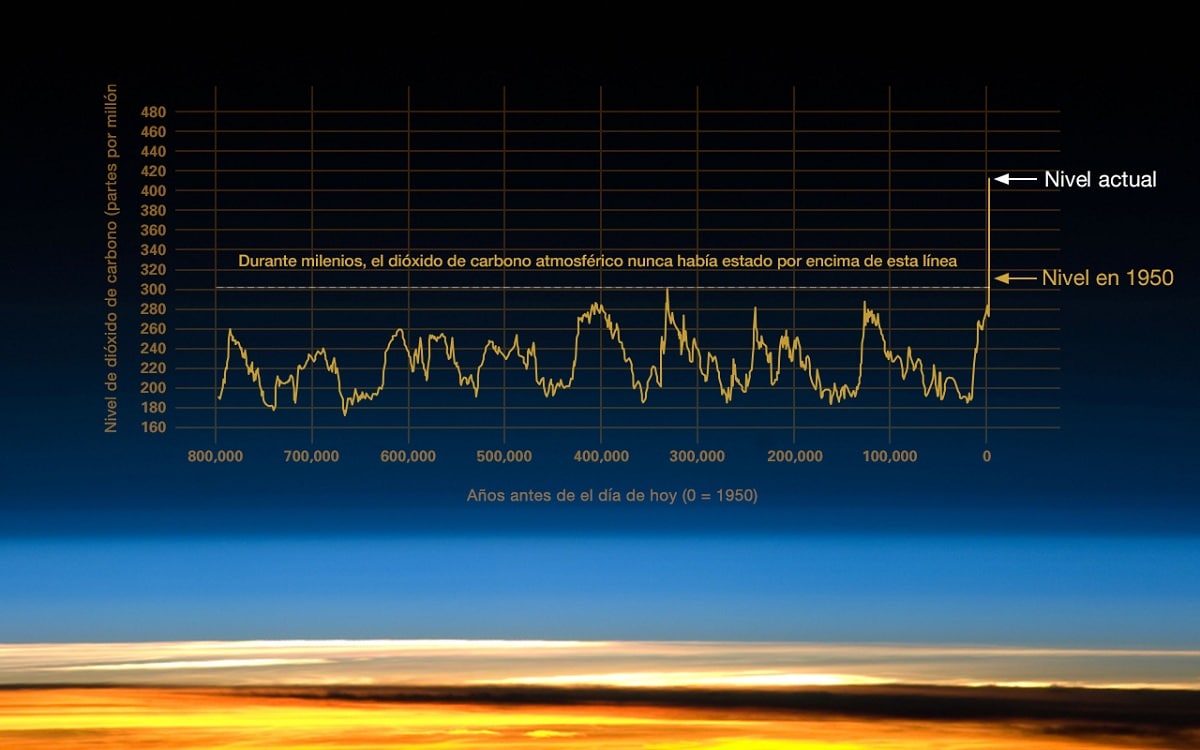
One of the biggest problems today is climate change. But, without underestimating the climate crisis we are experiencing, the truth is that there have been major climatic changes in Earth's history that have had a different origin than this. However, it can provide great information about current events.
For this reason, we are going to dedicate this article to telling you what the great climatic changes in the history of the earth are and how important they are.
Types of climate change

Before we start developing publications, we need to understand what climate change is. Precisely, climate change is defined as a significant change in the composition of the climate that persists for a considerable period of time (from decades to centuries).
For its part, there have been many changes in the climate throughout the history of the Earth, and they have been studied in paleoclimatology, the science in charge of studying the properties of the Earth's climate over time. Meanwhile, broadly speaking, climate change can be divided into two categories:
- Past climate change: A series of climatic changes marked by cold and warm waves.
- Current climate change: characterized by rising global average temperatures.
At the origin of the Earth, 4600 billion years ago, the sun emitted less radiation than it does today. and the equilibrium temperature was -41 °C. We can, therefore, imagine the extreme cold of this stage, and therefore, the life that arose later was impossible at that time.
Major climate changes in Earth's history

As a result of studies of glaciers and ocean sediments, it was concluded that there was a period in climate history when high concentrations of greenhouse gases were recorded, including carbon dioxide and methane in the atmosphere, which marks the hypermodern period.
Among the consequences of this climate change, we can highlight the sharp increase in temperature, the intensification of extreme weather events such as droughts and floods, depending on the size of the land, the rise in sea level, the reduction in ice levels and the increase in water temperature and changes in biogeochemical cycles. All this affects ecosystems and species whose populations are very small or more prosperous, depending on their characteristics, but many negatively impacted species have even become extinct.
oxygen in the atmosphere
With the advent of cyanobacteria came aerobic photosynthesis, the process by which organisms fix carbon dioxide and release oxygen. Before cyanobacteria appeared, there was no free oxygen in the atmosphere. Due to this fact, the concentration of carbon dioxide in the atmosphere decreases and aerobic organisms appear.
Jurassic Maximum

The whole planet was in a period of tropical climate, and then the dinosaurs appeared. Rising global temperatures are thought to be caused by high concentrations of carbon dioxide released into the atmosphere by accelerating rock erosion.
Paleocene-Eocene thermal maximum
Also known as Early Eocene Thermal Maximum or Late Paleocene Thermal Maximum. This is a sudden increase in temperature, especially a sudden increase in the average temperature of the Earth by 6°C (about 20.000 years, which is a very short time for global climate change). This led to changes in ocean circulation and the atmosphere, and led to the extinction of many species. As its name suggests, it marked the end of the Paleocene and the beginning of the Eocene.
Pleistocene Ice Age
The other most relevant climatic change in history is glaciation, a period in which average global temperatures drop and therefore continental ice, polar ice caps and glaciers expand. It is estimated that there have been 4 Great Ice Ages in the past, the last of which was the Pleistocene Ice Age. It is believed that they originated in the Quaternary period, that is, from 2,58 million years ago to the present.
Maunder minimum
Corresponds to the period covered between 1645 and 1715 when sunspots on the sun's surface almost completely disappeared. As a result, the sun emits less radiation and as a result it is a cold period.
There are believed to be six solar minima similar to this one, starting with the Egyptian minimum in 1300 BC. C., until the last, the minimum of Maunder. In all these cases, the most relevant consequence is a drastic drop in global temperatures, which means that species do not adapt to the cold in time, drastic declines in populations, which affect entire ecosystems, and even the extinction of some species.
current climate change

Current climate change is associated with an increase in the average global temperature, often referred to as global warming. While the term global warming takes into account temperature increases and their future projections, The concept of climate change includes global warming and its impact on other climatic variables.
Unlike past climate change, current climate change is only human-caused, that is, caused by human activities. Since the Industrial Revolution, humans have used fossil fuels for their activities, which has caused an increase in the concentration of greenhouse gases in the atmosphere. Specifically, these gases act as greenhouses and retain heat in the Earth, in fact, without its presence in the atmosphere, the temperature on Earth would be around -20°C.
Therefore, the more the concentration of greenhouse gases in the atmosphere increases, the higher the temperature on Earth will be, that is why we say global warming. The global average temperature is estimated to have increased by 1,1°C compared to the pre-industrial average global temperature.
Being human and great climatic changes in the history of the Earth
15.000 years ago, Homo sapiens had spread throughout the earth. At least, for those areas not covered by permanent ice. However, the end of the last Great Ice Age, the Ice Age, brought major changes to our species. In the millennia that accompanied the great climate change, humans stopped being nomadic, hunter-gatherers, and began to settle.
In a study published at the end of last year by the Universities of Alicante and the Algarve, he analyzed how this change occurred in the Atlantic façade of the Iberian Peninsula. The search for food began to grow the population of the territory that crossed the Duero, the Guadiana and the sea. There is more and more food to choose from.
There are also fluctuations in the background of rising temperatures. During the so-called 8200 climate event, the Earth's temperature fell between 2 and 4 degrees Celsius. As the University of Alicante points out, on the Atlantic coast, this cooling is accompanied by changes in ocean currents. Suddenly, the mouth of the Tagus River, which today extends to Lisbon and its parish, is filled with nutrients and edible species, which has caused a more intense exploitation of aquatic resources, the demographic explosion and the emergence of the first stable settlements.
Republics and empires are not immune to change
Find fossils, decipher remains, collect traces of prehistoric climates... Rtracking traces of the past is complicated. However, with the invention of writing, especially papyrus and parchment, everything changed. It was then that history began to speak to the future. If we want to know what happened to ancient Greece or how the Roman Empire disappeared, we just have to read it.
The last decades of the Roman Republic were marked by social unrest. The political struggles that followed the assassination of Julius Caesar gave way to the Empire, coinciding with a period of cold, poor harvests and famine in almost all the territories under Roman control. These data are only known from the written chronicles that have been preserved since then. Amid political turmoil, famine and social unrest put the final nail in the republic's coffin.
Now we also know 43 and 42. C. is the coldest in the last 2500 years. A study published in July 2020 linked that cold spell to two major eruptions at what is now Alaska's Okmok volcano. Its ash blocked out the sun for several years, causing widespread cooling in the Northern Hemisphere; rain patterns also changed.
The empires that arose after the fall of Rome could not escape the fluctuations of the climate. In the third century of our time, the Fayoum region of Egypt was the granary of Rome, and the Nile River irrigated the largest agricultural center of the empire. However, around the year 260 d. C., the crops began to fail and the production of cereals was changed to the raising of goats, which were much more resistant. Conflicts over access to water have become common, and declining yields have also led to lower taxes and massive migration north. In many years, the area will be empty.
Once again, climate change is the origin of everything. During those years, some event (as yet unknown, although it may have been another volcanic eruption) changed the pattern of the monsoons that supply water to the headwaters of the Nile each year. The change was also sudden (according to a study published in November), leading to severe droughts.
Climate instability is not unique to our time, although the speed at which changes are taking place and the reasons for them are. Climate fluctuations have shaped our history. Lessons have accumulated over thousands of years about the consequences of the climate crisis. Yes, things are very different today. For the first time, we are facing a climate crisis, we see it coming and we can stop it. It is not produced by volcanic changes or ocean currents. They are Homo sapiens themselves testing their ability to adapt to climate change.
I hope that with this information you can learn more about the great climatic changes in the history of the Earth.